
Altinho: The Hilltop Haven of Panaji
Discover Altinho in Panaji: A serene hilltop retreat with Portuguese charm, cultural richness, and panoramic views, perfect for a leisurely and insightful getaway.
Altinho, perched atop a gentle hill in the heart of Panaji, offers a serene escape from the bustling city below. This picturesque neighborhood is a harmonious blend of colonial charm and modern vibrancy, making it a must-visit for any traveler to Goa. As you meander through its winding streets, you'll be greeted by well-preserved Portuguese-style villas, lush gardens, and a scattering of quaint chapels, each telling a story of its own. The area is known for its tranquil ambiance and panoramic views, providing a perfect backdrop for leisurely strolls. From the hilltop, you can gaze upon the Mandovi River and the sprawling cityscape of Panaji, capturing some truly breathtaking vistas. The Governor's House, an architectural marvel with manicured lawns, adds to the grandeur of Altinho. Altinho is not just about scenic beauty; it is also a cultural hub. Home to the All India Radio Station and the Kala Academy, the neighborhood buzzes with artistic and musical activities. The local art galleries and cultural centers offer a glimpse into Goa’s rich heritage, making it a fascinating spot for culture enthusiasts. Whether you are an avid history buff, an art lover, or someone seeking peace, Altinho promises a rich and varied experience.
Local tips in Altinho
- Wear comfortable shoes; the hilly terrain and cobblestone streets are best explored on foot.
- Visit the area during the early morning or late afternoon for the best light and cooler temperatures.
- Check the schedule at Kala Academy for local performances and exhibitions.
- Don't miss the view from the top of the hill, especially at sunset.
- Bring a camera to capture the colonial architecture and stunning vistas.
Altinho: The Hilltop Haven of Panaji
Altinho, perched atop a gentle hill in the heart of Panaji, offers a serene escape from the bustling city below. This picturesque neighborhood is a harmonious blend of colonial charm and modern vibrancy, making it a must-visit for any traveler to Goa. As you meander through its winding streets, you'll be greeted by well-preserved Portuguese-style villas, lush gardens, and a scattering of quaint chapels, each telling a story of its own. The area is known for its tranquil ambiance and panoramic views, providing a perfect backdrop for leisurely strolls. From the hilltop, you can gaze upon the Mandovi River and the sprawling cityscape of Panaji, capturing some truly breathtaking vistas. The Governor's House, an architectural marvel with manicured lawns, adds to the grandeur of Altinho. Altinho is not just about scenic beauty; it is also a cultural hub. Home to the All India Radio Station and the Kala Academy, the neighborhood buzzes with artistic and musical activities. The local art galleries and cultural centers offer a glimpse into Goa’s rich heritage, making it a fascinating spot for culture enthusiasts. Whether you are an avid history buff, an art lover, or someone seeking peace, Altinho promises a rich and varied experience.
Iconic landmarks you can’t miss
Immaculate Conception Church
Explore the historic Immaculate Conception Church in Panaji, Goa - a breathtaking blend of colonial architecture and spiritual tranquility.

Campal Gardens
Experience the tranquility and beauty of Campal Gardens in Panaji, Goa, a perfect retreat for nature lovers and tourists seeking relaxation.

Azad Maidan
Explore Azad Maidan, a historical landmark in Panaji, Goa, where culture, heritage, and nature come together for an unforgettable experience.
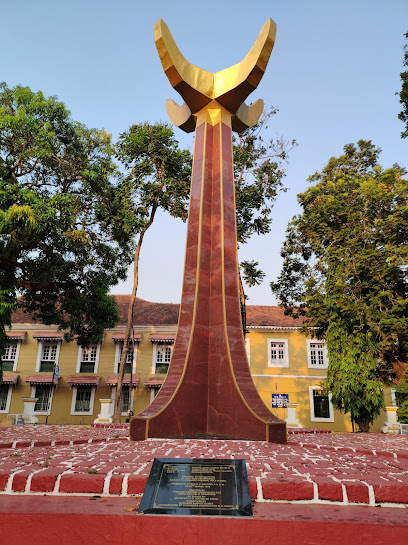
Fontainhas
Explore Fontainhas, a colorful heritage district in Panaji, Goa, filled with colonial charm, vibrant art, and rich cultural experiences.

Sunaparanta
Explore the vibrant artistic heritage of Goa at Sunaparanta, a cultural hub for contemporary art exhibitions and creative workshops.

St. Sebastian's Chapel, Goa
Discover the enchanting St. Sebastian's Chapel in Goa, a serene blend of history, architecture, and spirituality set in the heart of Fontainhas.

Fountainhas Colorful Houses
Explore the vibrant colonial charm of Fountainhas Colorful Houses in Panaji, Goa, and immerse yourself in the beauty of this unique cultural gem.

Fontainhas old quarter
Explore Fontainhas, Goa's vibrant old quarter, where colorful Portuguese architecture meets rich cultural heritage and stunning river views.
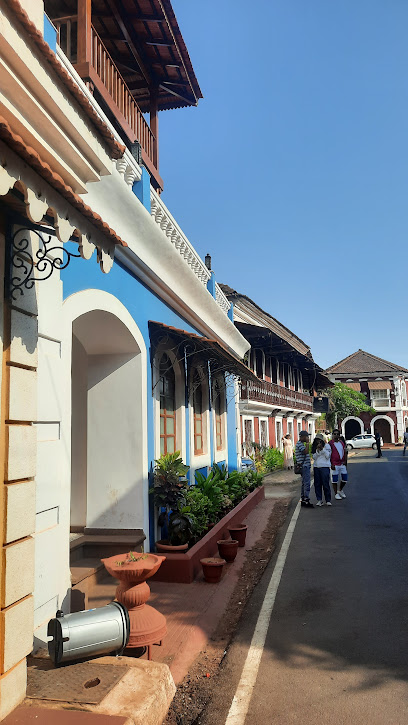
Roman mooring stone
Explore the Roman Mooring Stone, a captivating historical landmark in Panaji, Goa, reflecting the region's rich maritime heritage.

Altinho Goa
Discover the historical allure of Altinho Goa, a charming neighborhood in Panaji filled with colonial architecture and rich cultural heritage.

Unmissable attractions to see
Immaculate Conception Church
Explore the architectural beauty and rich history of Immaculate Conception Church, a must-see landmark in the heart of Panaji, Goa.

Campal Gardens
Experience the beauty and tranquility of Campal Gardens, a lush oasis in the heart of Goa, perfect for relaxation and leisure activities.
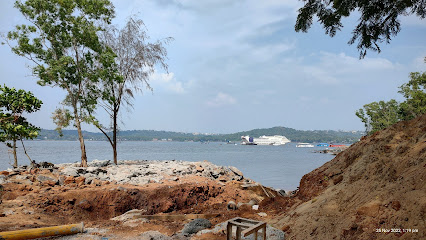
Malson Shoes
Explore Malson Shoes, a serene garden oasis in Panaji, Goa, blending lush landscapes with cultural landmarks for an unforgettable experience.

Indian Customs & Central Excise Museum
Explore the Indian Customs & Central Excise Museum in Panaji: Uncover the rich history of India's fiscal policies and economic evolution.

Statue of Abbé Faria
Discover the rich history of Goa through the captivating Statue of Abbé Faria, a tribute to a revolutionary priest amidst serene surroundings.

Inox panjim
Experience the magic of cinema at Inox Panjim, where modern facilities meet the charm of Goa's vibrant culture.

Essential places to dine
The Fisherman's Wharf Panjim
Experience authentic Goan seafood and vibrant Indian flavors at The Fisherman's Wharf in Panjim - A must-visit for food lovers.

Kokni Kanteen Goa
Experience authentic Goan seafood at Kokni Kanteen - where every dish tells a story of coastal heritage.

Sher-E-Punjab Goa
Discover authentic Punjabi flavors fused with Goan cuisine at Sher-E-Punjab in Panaji - where every meal is a celebration.

Viva Panjim
Experience authentic Goan flavors at Viva Panjim – where tradition meets culinary excellence in a family-friendly atmosphere.

Casa Bhonsle Restaurant and Bar
Experience authentic Goan cuisine at Casa Bhonsle Restaurant and Bar—where fresh seafood meets vibrant local flavors in Panaji.

Cafe Ritz Restaurant & Bar
Experience authentic Goan cuisine at Cafe Ritz Restaurant & Bar – where fresh seafood meets traditional flavors in Panaji.

Evergreen Restaurant 1975
Experience authentic Goan flavors at Evergreen Restaurant 1975—your destination for fresh seafood and warm hospitality in Panaji.

George Restaurant & Bar
Experience authentic Goan cuisine and vibrant nightlife at George Restaurant & Bar in Panaji - A must-visit for food lovers.

Altinho Restaurant
Experience authentic Goan cuisine at Altinho Restaurant in Panaji – a culinary delight nestled in the heart of Goa.

Swaad family bar and restaurant
Experience authentic Goan cuisine at Swaad Family Bar and Restaurant in Panaji – where delicious flavors meet vibrant culture.

Markets, malls and hidden boutiques
Bombay Bazar
Explore the vibrant styles of Bombay Bazar, a clothing store in Panaji, Goa, showcasing a unique blend of traditional and contemporary fashion.

AND Caculo Mall
Explore a diverse collection of Western apparel and accessories at AND Caculo Mall, a premier shopping destination in Panaji, Goa.

Fashion Mark
Explore Fashion Mark in Goa for exclusive women's clothing and bridal designs, combining elegance with unique craftsmanship in a delightful boutique setting.
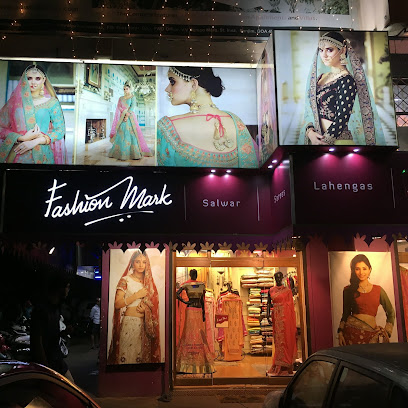
O.M.O
Explore the vibrant styles at O.M.O, a trendy clothing store in Altinho, Panaji, Goa, blending local culture with contemporary fashion.

BUQAY arabic concept
Explore BUQAY, a unique clothing accessories store in Panaji, Goa, blending Arabic influences with contemporary fashion delights.

The Good Life Goa
Discover contemporary fashion at The Good Life Goa, where designer clothing meets the artistic spirit of Panaji's Fontainhas quarter.
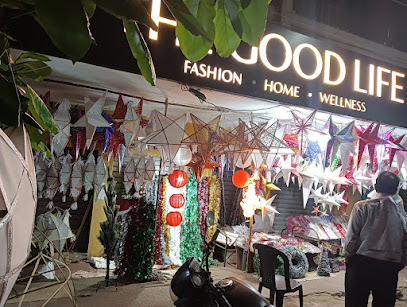
Sacha's Shop
Discover unique designer clothing and accessories at Sacha's Shop, a fashionable boutique in the heart of Panaji, Goa.
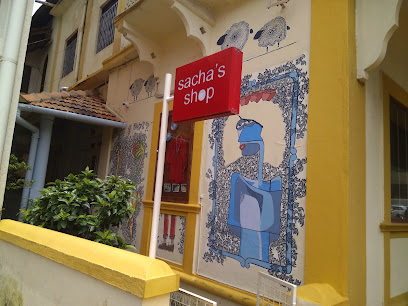
Indian Story
Explore Indian Story in Panaji for exquisite couture fashion, unique jewelry, and a taste of local artistry in a charming boutique setting.

Innovations Exclusive fashionwear
Explore Innovations Exclusive Fashionwear in Goa for unique couture dresses and trendy women's clothing that elevate your style.

Saum Boutique
Discover Saum Boutique in Panaji, Goa - a unique shopping destination offering exquisite fashion and handcrafted treasures for every traveler.

Essential bars & hidden hideouts
Joseph Bar
Experience Goa's culinary charm at Joseph Bar, a vibrant tapas bar in Panaji offering delightful flavors and a lively atmosphere.

Soho
Experience the vibrant nightlife of Goa at Soho, a lively pub in Panaji offering an eclectic atmosphere and an extensive drink menu.

Antonio@31
Experience the vibrant flavors of Goa at Antonio@31, a lively tapas bar in Panaji's charming Altinho district, perfect for culinary adventurers.

For The Record - Vinyl Bar
Experience the perfect blend of music, drinks, and culinary delights at For The Record - Vinyl Bar in Panaji, Goa.

K BAR
Experience the vibrant flavors and lively atmosphere at K BAR, a must-visit bar and restaurant in the heart of Goa's Panaji.

BAR 51
Discover the vibrant nightlife at Bar 51 in Panaji, Goa, where expertly crafted cocktails and delicious bites await in a lively atmosphere.

Isabella's Tapas Bar
Experience the best of Spanish cuisine at Isabella's Tapas Bar in Panaji, Goa, with authentic flavors, vibrant ambiance, and delightful drinks.
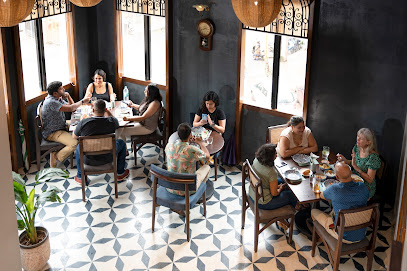
Pinch Bistro & Bar
Discover the vibrant nightlife and delicious dining at Pinch Bistro & Bar in Campal, Goa - a perfect blend of taste, ambiance, and fun.

Ace`s The Pub & Restaurant
Experience the lively ambiance and delicious flavors at Ace's The Pub & Restaurant in Panaji, Goa, where every visit is a celebration of local culture.

CIFA BAR
Discover the vibrant atmosphere and local flavors at CIFA BAR, the perfect retreat in the heart of Goa's Cortin neighborhood.

Local Phrases
-
- Helloनमस्कार
[namaskār] - Goodbyeअलविदा
[alvidā] - Yesहाँ
[hā̃] - Noनहीं
[nahī̃] - Please/You're welcomeकृपया
[kṛipayā] - Thank youधन्यवाद
[dhanyavād] - Excuse me/Sorryक्षमा कीजिए
[kṣamā kījie] - How are you?आप कैसे हैं?
[āp kaise haĩ?] - Fine. And you?ठीक हूँ। आप सुनाएं?
[ṭhīk hū̃. āp sunāẽ?] - Do you speak English?क्या आप अंग्रेजी बोलते हैं?
[kyā āp aṅgrejī bolte haĩ?] - I don't understandमुझे समझ में नहीं आया
[mujhe samajh mẽ nahī̃ āyā]
- Helloनमस्कार
-
- I'd like to see the menu, pleaseकृपया मेन्यू दिखाएं
[kṛipayā menyū dikhāẽ] - I don't eat meatमैं मांस नहीं खाता/खाती
[maĩ māns nahī̃ khātā/khātī] - Cheers!चियर्स!
[ciyars!] - I would like to pay, pleaseकृपया मैं भुगतान करना चाहूँ
[kṛipayā maĩ bhugatān karnā cāhū̃]
- I'd like to see the menu, pleaseकृपया मेन्यू दिखाएं
-
- Help!बचाओ!
[bachāo!] - Go away!दूर जाओ!
[dūr jāo!] - Call the Police!पुलिस को बुलाओ!
[pulis ko bulāo!] - Call a doctor!डॉक्टर को बुलाओ!
[ḍākṭar ko bulāo!] - I'm lostमैं खो गया/गई हूँ
[maĩ kho gayā/gaī hū̃] - I'm illमुझे बीमारी है
[mujhe bīmārī hai]
- Help!बचाओ!
-
- I'd like to buy...मैं खरीदना चाहूँ
[maĩ kharīdnā cāhū̃] - I'm just lookingमैं बस देख रहा/रही हूँ
[maĩ bas dekh rahā/rahī hū̃] - How much is it?यह कितने का है?
[yah kitne kā hai?] - That's too expensiveयह बहुत महंगा है
[yah bahut mahangā hai] - Can you lower the price?क्या आप कीमत कम कर सकते हैं?
[kyā āp kīmat kam kar sakte haĩ?]
- I'd like to buy...मैं खरीदना चाहूँ
-
- What time is it?अब कितना बजा है?
[ab kitnā bajā hai?] - It's one o'clockएक बजा है
[ek bajā hai] - Half past (10)दस बजे बारह मिनट
[das baje bārah minat] - Morningसुबह
[subah] - Afternoonदोपहर
[dopahar] - Eveningशाम
[śām] - Yesterdayकल
[kal] - Todayआज
[āj] - Tomorrowकल
[kal] - 1एक
[ek] - 2दो
[do] - 3तीन
[tīn] - 4चार
[cār] - 5पाँच
[pā̃c] - 6छह
[chhah] - 7सात
[sāt] - 8आठ
[āṭh] - 9नौ
[nau] - 10दस
[das]
- What time is it?अब कितना बजा है?
-
- Where's a/the...?...कहाँ है?
[...kahā̃ hai?] - What's the address?पता क्या है?
[patā kyā hai?] - Can you show me (on the map)?क्या आप मुझे दिखा सकते हैं (नक्शे पर)?
[kyā āp mujhe dikhā sakte haĩ (nakṣe par)?] - When's the next (bus)?अगली (बस) कब आएगी?
[aglī (bas) kab āegī?] - A ticket (to ....)एक टिकट (कोई जगह के लिए)
[ek ṭikṭ (koī jagah ke lie)]
- Where's a/the...?...कहाँ है?
History of Altinho
-
Altinho, located in Panaji, Goa, has its roots deeply intertwined with the Portuguese colonization of the region in the 16th century. The area was developed as an elite residential neighborhood for Portuguese officials, showcasing grand mansions and churches. The architectural style reflects a blend of Indo-Portuguese influences, characterized by ornate facades and colorful tiles that narrate the colonial history of Goa.
-
In the 18th century, as the Portuguese moved their capital from Old Goa to Panaji, Altinho gained prominence. Its elevated position provided a strategic view over the Mandovi River, making it an ideal location for influential families and government officials. The establishment of Panaji as the administrative hub led to the construction of important buildings, including the Municipal Garden and the Church of Our Lady of the Immaculate Conception, which still stand as cultural landmarks.
-
Throughout the 19th and 20th centuries, Altinho evolved into a melting pot of cultures, as people from various backgrounds, including Hindus, Christians, and Muslims, settled in the area. This cultural diversity is reflected in the neighborhood's festivals, culinary traditions, and community life, highlighted by the annual Carnival celebrations that showcase vibrant parades and traditional music, drawing locals and tourists alike.
-
After India gained independence in 1947, Altinho continued to flourish as a residential area while also becoming a center for education and culture. The establishment of institutions like the Goa College of Art in the 1970s further enriched the neighborhood's artistic landscape, promoting local artists and craftsmen. This era marked a transition towards a more inclusive community, where heritage conservation began to gain importance.
-
In recent decades, Altinho has seen renewed efforts towards heritage conservation, recognizing the importance of preserving its colonial architecture and cultural history. The Goa Heritage Action Group has been instrumental in advocating for the protection of historical structures and promoting sustainable tourism, ensuring that Altinho remains a vibrant testament to Goa's rich past while adapting to modern challenges.
Altinho Essentials
-
Altinho is centrally located in Panaji, making it easily accessible from other neighborhoods. You can reach Altinho via local taxis, auto-rickshaws, or on foot if you're in the vicinity. The nearest bus stop is a short walk away, with regular services connecting to key areas in Panaji. If arriving from outside the city, the nearest major transportation hub is the Kadamba Bus Terminal, from where you can take a taxi or local bus to Altinho.
-
Altinho is best explored on foot, as many attractions are within walking distance. Local buses and auto-rickshaws are available for longer distances. While there is no train service within Panaji, renting a bicycle can be a delightful way to explore the area. Always negotiate the fare with auto-rickshaw drivers beforehand to avoid any confusion.
-
Altinho is generally considered safe for tourists, but standard precautions should be taken. Areas with higher crime rates targeting tourists include isolated streets at night and poorly lit areas. Avoid displaying valuables and remain vigilant in crowded places. It is advisable to stay away from quiet back alleys after dark.
-
In case of an emergency, dial 112 for immediate assistance. The local police station is located nearby, and there are several hospitals and clinics in Panaji for medical emergencies. It is advisable to carry a copy of your travel insurance and emergency contact numbers.
-
Fashion: Do dress modestly, especially when visiting religious sites. Avoid wearing revealing clothing. Religion: Do respect local customs and traditions, including removing shoes when entering places of worship. Public Transport: Do be courteous to fellow passengers. Don't engage in loud conversations. Greetings: Do greet locals with a smile and a nod or handshake. Eating & Drinking: Do enjoy local cuisine at eateries. Don't waste food or drink in public places.
-
To experience Altinho like a local, visit the nearby markets to sample fresh produce and local snacks. Engage with the community by attending local festivals or events. For a unique experience, take a walking tour to explore the area's colonial architecture and hidden gems. Don't hesitate to ask locals for directions or recommendations; they are often eager to assist.
Nearby Cities to Altinho
-
Things To Do in Goa
-
Things To Do in Pune
-
Things To Do in Mumbai
-
Things To Do in Mysore
-
Things To Do in Bengaluru
-
Things To Do in Nashik
-
Things To Do in Aurangabad
-
Things To Do in Kozhikode
-
Things To Do in Coimbatore
-
Things To Do in Kochi
-
Things To Do in Chennai
-
Things To Do in Puducherry
-
Things To Do in Pondicherry
-
Things To Do in Vadodara
-
Things To Do in Madurai





